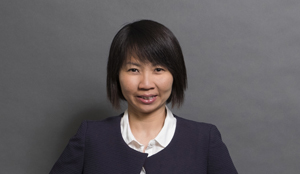No doctrine of equivalents in Singapore – Lee Tat Cheng v Maka GPS Technologies Pte Ltd [2018] SGCA 18 – Singapore Court of Appeal decision of 6 April 2018
The UK Supreme Court's decision in Actavis UK Limited and other v Eli Lilly and Company ([2017] UKSC 48) significantly changed the law of patent infringement in the UK by importing the American "doctrine of equivalents". The position in Singapore has traditionally been largely aligned with that in the UK, leading to speculation as to whether the Singapore courts might follow suit. The Singapore Court of Appeal has now conclusively ruled that the decision in Actavis should not be applied in Singapore.
How Actavis changed the law in UK
Pre-Actavis, the test for patent infringement in the UK was essentially to ask: what the person skilled in the art would have understood the patentee to mean by the language of the patent claim, and whether the accused product falls within the scope of the claim as construed "purposively" in this manner. (Catnic Components Limited and another v Hill & Smith Limited [1982] RPC 183; Improver Corporation and others v Remington Consumer Products Limited and others [1990] FSR 181)
The test was thus much stricter than the American approach which, under the so-called "doctrine of equivalents", considers a patent to be infringed so long as the defendant's product performs substantially the same function in substantially the same way as the invention so as to achieve the same results. The UK courts had previously rejected the doctrine of equivalents as impermissibly extending the protection conferred by a patent beyond its claims. (Kirin-Amgen Inc v Hoechst Marion Roussel Ltd [2005] RPC 9)
Then came Actavis (see summary of the decision here), which revamped the law in the UK by importing the doctrine of equivalents so that now, even if the accused product falls outside of the words of the claim, purposively construed, it may still infringe if found to be a variant that differs from the invention in ways which are immaterial. Clearly, the new test potentially makes it easier for the patentee to prove infringement.
Singapore Court of Appeal: Actavis should not apply in Singapore
Maka GPS concerns a patent for an in-vehicle camera. The trial judge concluded that there was no infringement. On appeal, the patentee argued that the broader test in Actavis should be applied but the Court of Appeal disagreed citing 3 reasons:
- Firstly, the court was of the view that the approach set out in Actavis is inconsistent with the Singapore Patents Act. Specifically, section 113 of the Singapore Patents Act states that the extent of protection conferred by a patent is to be determined by what is specified in the claims, interpreted in light of the description and any drawings contained in the patent specification. The court was of the view that this provision leaves no room to extend the scope of protection conferred by a patent beyond what is provided in the claims, which would be the case if the doctrine of equivalents were imported into Singapore law. The court also observed that the new approach in Actavis was said to give effect to the amendments made in 2000 to the Protocol on the Interpretation of Article 69 of the European Patent Convention. Article 69 concerns the extent of protection conferred by a European patent. Singapore operates under a different legal regime because it is not bound by the Protocol.
- Secondly, the court was of the view that the "purposive" approach strikes the right balance between affording fair protection to the patentee and providing a reasonable degree of certainty to third parties. This is because, on the one hand, "it is fair for a patentee to be bound by the language in which he chooses to frame the claims of his patent [as that] is how he has chosen to define the scope of his monopoly, and the rest of the world should be entitled to take him at his word" (at [52]). On the other hand, the requirement to construe the words of the claims in a purposive manner rather than based on the strict, literal meaning protects the patentee against third parties who make immediate variants to the patented invention. In contrast, Actavis tilted the balance too far in favour of the patentee and in a manner that is incompatible with the governing legislation.
- Finally, the purposive approach was said to be more certain because it is aimed at determining what, based on the language of the claims, the patentee meant to cover at the time of the patent application. The doctrine of equivalents, on the other hand, focuses on how the patented invention works in practice based on the state of developing scientific knowledge at the date of the alleged infringement. The court was concerned that this element of ex post facto analysis may give rise to uncertainty.
At the end of the day, as the test for infringement has a material impact on the protection afforded to the patentee, the CA was of the view that it should be left to Parliament to decide if such a change should be made.
This decision is an important one as it gives certainty to the test for infringement in Singapore post-Actavis.
This article is produced by our Singapore office, Bird & Bird ATMD LLP, and does not constitute legal advice. It is intended to provide general information only. Please contact Alban Kang and Oh Pin-Ping if you have any specific queries.



